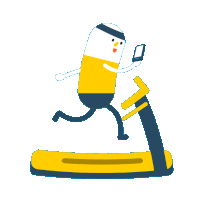

In the ever-evolving landscape of fitness, the importance of flexibility cannot be overstated. This guide is not just about achieving a full split but understanding how effective lat stretches can be the key to unlocking a more agile, mobile, and resilient body. We'll delve deeper into the nuances of these stretches, providing a comprehensive understanding of their impact on flexibility and overall well-being.
Flexibility goes beyond the realms of yoga studios and dance floors; it's a fundamental aspect of a healthy lifestyle. Improved flexibility contributes to better posture, increased range of motion, and a reduced risk of injuries. The focus here is on the latissimus dorsi muscles, a set of broad muscles that play a crucial role in the stability and movement of the upper body.
To truly appreciate the benefits of lat stretches, a brief exploration of anatomy is in order. The latissimus dorsi muscles, colloquially known as the lats, are large, triangular muscles that extend from the spine and wrap around to the front of the body, attaching to the upper arm. Their primary functions include shoulder adduction, extension, and internal rotation.
Understanding the distinction between dynamic and static stretches is vital for creating an effective stretching routine. Dynamic stretches, involving continuous movement, are ideal for warming up before more intense physical activities. On the other hand, static stretches, where the position is held for a period, are best suited for cooling down and improving flexibility over time.
How to:
Stand with feet shoulder-width apart. Extend your arms parallel to the ground. Swing your arms in a circular motion, gradually increasing the diameter.Why:
Arm swings dynamically engage the lats, promoting blood flow and preparing them for more profound stretches. This dynamic warm-up is particularly beneficial before engaging in more intense physical activities.
How to:
Position yourself on your hands and knees in a tabletop position. Arch your back upward (cat) and then dip it down (cow).Why:
This yoga-inspired stretch not only targets the lats but also engages the entire spine, fostering improved flexibility. It serves as a transitional movement to prepare the body for deeper stretches.
How to:
Stand facing a wall. Place your hands above head height on the wall. Walk backward, allowing your torso to stretch toward the ground.Why:
The wall lat stretch provides a deep stretch to the lats and shoulders, promoting enhanced flexibility over time. This static stretch is excellent for targeting specific muscle groups.
How to:
Stand with feet hip-width apart. Extend your arms to the sides. Twist your torso to one side, feeling the stretch in the lats, then repeat on the other side.Why:
The standing trunk twist dynamically engages the lats and helps improve rotational flexibility, a crucial aspect often overlooked in traditional stretching routines.
How to:
Begin in a kneeling position. Sit back onto your heels and extend your arms forward on the floor.Why:
This relaxing stretch targets the lats and is excellent for post-workout recovery. The elongated position allows for a deep release of tension in the upper body.
How to:
Sit on the floor with legs extended. Reach your arms overhead and bend at the waist, aiming to touch your toes.Why:
The seated lat stretch isolates the lats and improves flexibility in the lower back. It's a great stretch to incorporate into a cool-down routine.
How to:
Stand beside an open door. Raise your arm and place your hand on the door frame. Slowly lean into the stretch, feeling the tension in your lats.Why:
The door frame lat stretch provides a unique angle, targeting the lats from a different perspective. This stretch is particularly effective for individuals looking to diversify their stretching routine.
Apart from the obvious improvement in flexibility, incorporating lat stretches into your routine yields a myriad of benefits.
Better Posture:
Lat stretches open up the chest and shoulders, combating the effects of prolonged sitting and enhancing overall posture.
Reduced Muscle Tension:
Targeting the lats helps release tension in the upper back, reducing stiffness and promoting relaxation.
Enhanced Mobility:
Improved flexibility in the lats translates to increased range of motion, contributing to better overall mobility.
Injury Prevention:
A flexible and well-stretched latissimus dorsi reduces the risk of injuries, especially in the shoulders and upper back.
Now that we've explored an array of effective lat stretches, it's crucial to understand how to incorporate them into your routine seamlessly. Here's a simple yet effective plan.
Warm-Up with Dynamic Stretches:
Begin your stretching routine with dynamic stretches like arm swings and cat-cow stretches. This prepares your body for more intense stretching.
Targeted Static Stretches:
Move on to static stretches, holding each position for 15-30 seconds. Focus on feeling the stretch in your lats while maintaining controlled breathing.
Diversify Your Routine:
Periodically change your stretching routine to prevent muscle adaptation. Incorporate different stretches like the door frame lat stretch to keep things interesting.
Post-Workout Stretching:
Dedicate time to lat stretches in your post-workout routine. This helps in muscle recovery and ensures you continue making progress in flexibility.
While the intention is to enhance flexibility, certain mistakes can hinder progress. Here are common pitfalls to avoid.
Overstretching:
Pushing your body too far too quickly can lead to injuries. Progress gradually and listen to your body.
Neglecting Warm-Up:
Skipping the warm-up can reduce the effectiveness of your stretches and increase the risk of injuries.
Poor Breathing Technique:
Breath control is essential during stretches. Ensure you breathe deeply and consistently to enhance the effectiveness of each stretch.
Ignoring Signs of Discomfort:
While stretching may feel uncomfortable, it should not be painful. If you experience pain, adjust the stretch or consult a fitness professional.
Congratulations on unlocking the secrets to effective lat stretches! By incorporating these stretches into your routine, you're not just improving flexibility; you're investing in your overall well-being. Embrace the journey, be consistent, and let the newfound flexibility be a cornerstone for a healthier and more vibrant life.
.png)